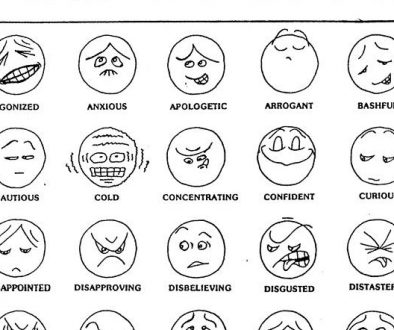How Do You Teach Empathy?
ORIGINALLY PUBLISHED JULY 30, 2005
I like Marshall Rosenberg’s definition of empathy for its simplicity and clarity. He says, “Empathy is the respectful understanding of another person’s experience.”
We also distinguish between “empathy”, which focuses our attention and presence on what is alive in another person, and “sympathy”, which shifts the focus to our own experience in a self-reflective way. Sympathy can actually block an experience of empathy.

One other related distinction concerns what is actually happening in our own experience when we are in empathic connection. We are as present as possible to the experience of another person without feeling what they are feeling. Again, feeling what another person is feeling can prevent us from experiencing the depth of empathic connection made possible by utilizing the tools and consciousness of Nonviolent Communication (NVC). We can connect with another person’s experience without having the same experience. For me, the experience of empathy is like “meditation off the cushion”.
This distinction may become clearer if you consider how we are defining feelings, especially about what feelings “mean” in NVC. We define feelings as physical sensations and emotions, “guttural” feelings. We distinguish feelings from “thoughts” or “evaluations”, which can actually block presence to our own feelings or connecting with the feelings of others.
In NVC, we see feelings as signals that give us information about the state of our needs. To oversimplify, when our need is met, we feel a certain range of feelings (often called “positive” or “good” feelings) and when our need is not met, we feel a different range of feelings (“negative” or “bad”). Thus, the cause of our feelings is the state of our needs, not what happens in the outside world, what we call the stimulus or observation.
We define needs in a specific way as well, as “that which is required universally to sustain or enhance life.” We all have the same needs. Words that point to needs tend to be vague or hazy, like “connection”, “contribution”, “learning”, or “sustenance”. We distinguish needs from “strategies” or “satisfiers” which are concrete and specific ways of meeting a need.
One example is the need for sustenance. Humans have invented or discovered about a million ways to meet this most basic of human needs; three strategies are a vegetarian diet, a vegan diet and an omnivorous diet. All strategies to meet a need come with both costs and benefits, and as impermanence is the rule, no one strategy will always work to meet a need. A person committed to a vegan diet may choose to meet their need for sustenance by consuming dairy products or meat if their pain (hunger) is great enough and their options are limited in the moment.
So, when we are training people to empathize, we are helping to clarify these distinctions, along with several more. First we are teaching people to be aware of their own needs and what needs might be met by empathizing with another person. We are also teaching and guiding them in certain practices designed to cultivate skills and awareness around 6 aspects of empathy: presence (attention on the present moment and what is actually happening); focus (on the other person’s observations, feelings, needs and requests); space (creating an opportunity for the other person to explore what is important to them while letting go of our thoughts about “agenda” or “fixing”); verbal reflection (certain language patterns designed to support ourselves and others in maintaining presence, focus and space); sensory acuity to notice “shift” (indicators that another person’s needs for empathy and understanding have been met or are unmet); and finally clarifying requests (assisting the other person by empathizing with what they may want next.)
—
http://www.scoop.it/t/radical-



